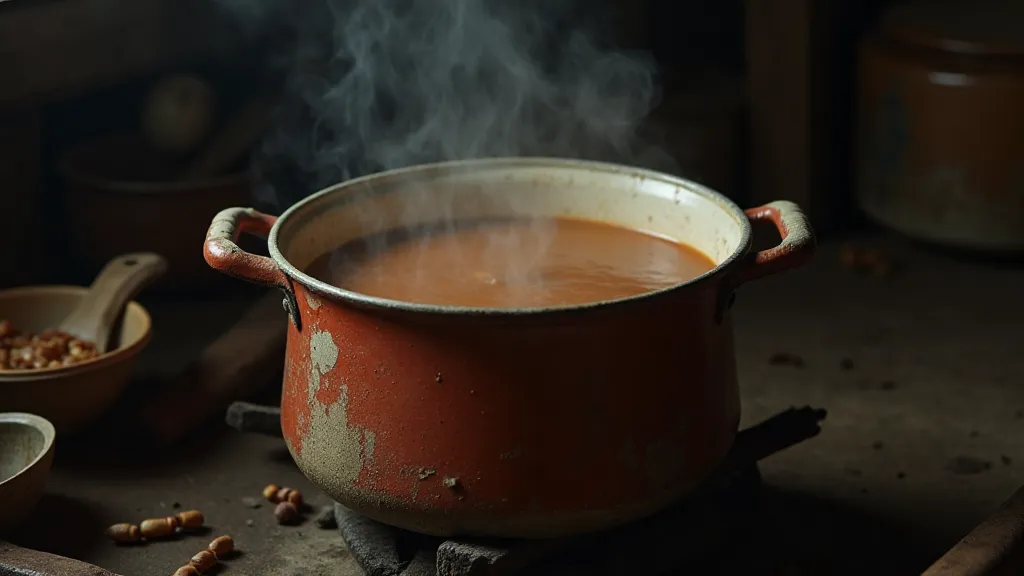Hoover Stew: A Humble Soup with a Powerful History
The Great Depression, a period of immense hardship for millions, demanded ingenuity and resourcefulness, especially when it came to food. Families stretched every dollar and utilized every scrap to ensure they could put something on the table. Among the many dishes born out of necessity, Hoover Stew stands out as a poignant symbol of that era. This wasn's a celebrated delicacy; it was a lifeline, a practical solution for families struggling to feed themselves.
The Origins of a Name
The name "Hoover Stew" is, understandably, a touch controversial. It's said to have originated as a somewhat derogatory label, referencing President Herbert Hoover's perceived inaction during the Depression. While Hoover wasn’t personally responsible for the economic collapse, the public often blamed him for the widespread poverty and unemployment. The stew itself wasn's created *by* Hoover, but the name stuck as a playful, albeit mocking, reference to the difficult times.
Regardless of its origin, the name accurately reflects the dish’s purpose: a simple, filling soup made from whatever ingredients were available. The "recipe" wasn's a precise formula; it was a guideline, adapting to what could be scavenged, grown in a small garden, or purchased at incredibly low prices. It’s fascinating to consider how resourceful people were, devising meals from minimal ingredients – a level of creativity often required for other simple dishes like peanut butter cookies, which also became staples during those challenging years. The effort to create something nutritious and filling from so little truly speaks to the resourcefulness of the time.

What Went Into Hoover Stew?
The beauty (and necessity) of Hoover Stew lies in its adaptability. There was no standardized recipe. The core of the stew typically revolved around tomatoes (canned tomatoes were a relatively affordable option) and macaroni. From there, ingredients were added depending on availability.
Common additions included:
- Meat scraps: Anything from beef or pork trimmings to organ meats (heart, liver) – often salvaged from butchers.
- Vegetables: Potatoes, onions, carrots, cabbage – anything a family could grow or afford.
- Beans: Dried beans (navy, pinto, or kidney) were a crucial source of protein.
- Spices: Salt and pepper were staples, but other spices were rare luxuries.
The point wasn's to create a gourmet meal; it was to provide sustenance and fill hungry bellies. The act of transforming basic, sometimes unwanted, components into something nourishing highlights the profound skills families honed during that period. It’s a mindset that permeated many aspects of life, even influencing simpler treats like The Alchemy of Leftovers: Transmuting Loss into Sustenance, a testament to the creative problem-solving born from scarcity. It wasn't just about filling stomachs; it was about finding beauty and value in the overlooked.
A Basic Hoover Stew Recipe (Adaptable!)
While the “official” Hoover Stew recipe varied wildly, here's a version based on common ingredients and techniques used during the Depression era. Remember to adjust the ingredients based on what you have on hand!
Ingredients:
- 1 tbsp Vegetable Oil
- 1 Onion, chopped
- 2 cloves Garlic, minced (optional)
- 1 lb Ground Beef or Beef Trimmings (can be omitted for a vegetarian version)
- 1 (28 ounce) can Crushed Tomatoes
- 4 cups Water or Beef Broth (water was more common)
- 1 cup Elbow Macaroni
- 1 cup Potatoes, peeled and diced
- 1/2 cup Carrots, peeled and diced
- Salt and Pepper to taste
Instructions:
- In a large pot or Dutch oven, heat the oil over medium heat. Brown the ground beef (if using), breaking it up with a spoon. Drain off any excess grease.
- Add the onion and garlic (if using) and cook until softened, about 5 minutes.
- Stir in the crushed tomatoes, water or broth, macaroni, and potatoes. Bring to a boil, then reduce heat and simmer for 20-25 minutes, or until the macaroni and potatoes are tender.
- Add the carrots during the last 10 minutes of cooking.
- Season with salt and pepper to taste.
This recipe yields approximately 6 servings. It’s hearty, filling, and economical – just as it was intended to be during the Great Depression. Thinking about these frugal recipes and ways to stretch a dollar brings to mind other classic dishes from the era, some sweeter than others. For those with a sweet tooth, even the simple pleasures of something like rice pudding, another example of how families made the most of limited resources.

Beyond Survival: The Psychological Impact
The Great Depression wasn't just about economic hardship; it was a period of immense psychological strain. The constant worry about where the next meal would come from took a toll on families. Dishes like Hoover Stew, while born out of necessity, also served a crucial role in providing a sense of normalcy and stability. The act of preparing and sharing a meal, even a simple one, could offer comfort and a much-needed sense of community. The ingenuity required wasn't solely about calories; it was about bolstering spirits and fostering a feeling of togetherness during incredibly difficult times.
The Evolution of Hoover Stew: Modern Interpretations
While Hoover Stew remains a powerful symbol of the Depression era, it has also inspired modern interpretations. Today, chefs and home cooks are recreating the dish, often incorporating modern ingredients and techniques while staying true to the spirit of resourcefulness and simplicity. Some variations include adding smoked paprika for a deeper flavor profile, or using wild rice instead of macaroni for a more nutritious twist. The principle of making the most of what’s available, a hallmark of the Depression era, continues to resonate in modern cooking.
Preserving the Memory: Hoover Stew in Popular Culture
Hoover Stew has made appearances in literature, film, and television, serving as a poignant reminder of the hardships faced by Americans during the Great Depression. These portrayals often highlight the resilience and ingenuity of those who lived through the era, while also serving as a cautionary tale about the dangers of economic inequality. These cultural representations often serve to remind us of the fragility of economic stability and the importance of community support.
Tips for Making Authentic Hoover Stew
If you're interested in trying your hand at making Hoover Stew, here are a few tips for making it as authentic as possible:
- Use canned tomatoes: Canned tomatoes were a relatively affordable option during the Depression, and they provide a key flavor component of the stew.
- Don't be afraid to experiment: Hoover Stew was all about using what you had on hand. Feel free to substitute ingredients based on what’s available in your pantry or garden.
- Simmer low and slow: Simmering the stew for an extended period of time allows the flavors to meld and deepen.
- Serve with crusty bread: Crusty bread is the perfect accompaniment to a hearty bowl of Hoover Stew.

More Than Just a Meal
Hoover Stew represents more than just a recipe. It embodies the spirit of resilience, ingenuity, and community that defined an era. It was a testament to the power of human adaptation and the ability to find sustenance and hope even in the face of adversity. The resourcefulness displayed in creating dishes like Hoover Stew – transforming humble ingredients into a nourishing meal – echoes the broader theme of making do and finding joy in simplicity. The act of sharing such a simple, yet vital, meal reinforced bonds and fostered a sense of shared experience, essential elements in navigating the hardships of the time.
The lessons learned during the Great Depression, and the recipes like Hoover Stew that emerged from that time, continue to hold relevance today. In a world increasingly focused on convenience and excess, the principles of frugality, resourcefulness, and community have never been more important. The ability to create something satisfying and nutritious from limited resources isn't just a historical skill; it's a valuable life skill that can benefit us all. It’s a reminder that true richness isn’t measured in material possessions, but in the strength of our connections and our ability to persevere.





